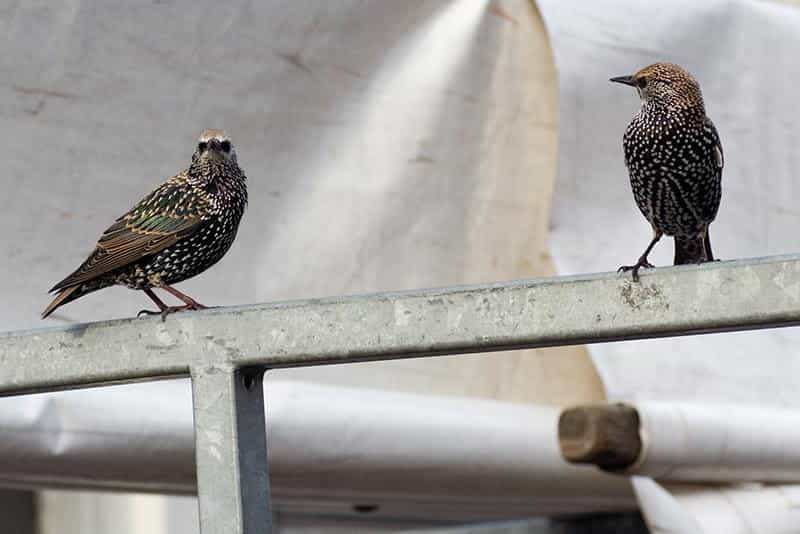Imagine walking into your warehouse to start the day and finding it covered in bird droppings. Not only is it unsightly, but it’s also a potential health hazard for you and your employees. Bird infestation in warehouses is a common problem that can cause a range of issues, from damage to property and goods to contamination of products and equipment and even disruption to daily operations.
If you’re a warehouse owner or manager, preventing birds from nesting in your facility is crucial. Fortunately, there are several effective prevention methods that can keep birds away and help maintain a clean and safe environment for your business.
Here, we’ll explore four of the most common prevention methods to keep your warehouse bird-free.
But first,
Contents
Why is It Important to Keep Birds Out of Your Warehouse in the First Place?
Well, birds can cause significant damage to your property, including roofs, gutters, and ventilation systems. They can contaminate products and equipment with their droppings, feathers, and other debris. This can lead to health and safety issues for your employees and customers, not to mention costly repairs and replacements for damaged goods and equipment.
In addition, bird infestations lead to downtime and disruptions to your daily operations, which can impact your bottom line.
4 Pigeon Prevention Methods for Your Warehouse
Physical Barriers
Physical barriers are one of the most effective warehouse bird control methods. They work by physically blocking birds from landing or perching on surfaces where they would roost or nest. Some of the most common barriers include bird spikes, bird netting, bird screens and bird wires.
- Bird spikes consist of narrow plastic or metal spikes attached to a base, which can be installed on almost any surface. The spikes make it uncomfortable or impossible for birds to land or perch on the surface, thus preventing them from nesting or roosting in the area.
- Bird netting is another practical physical barrier that can be used to prevent bird infestation. Netting consists of a strong, durable material stretched over a large area to create a barrier preventing birds from entering. Bird netting can be used to cover open loading bays or vents.
- Bird wires consist of thin, stainless steel cables attached to a base and strung across areas where birds typically roost or nest. The wires make it difficult for birds to land or perch on the surface, preventing them from nesting or roosting in the area.
- Bird screens consist of a mesh material installed over openings such as windows and vents to prevent birds from entering. Bird screens are particularly effective for preventing small birds from entering your warehouse, such as sparrows and finches.
Chemical Deterrents
Chemical deterrents are another popular method for keeping birds away from your warehouse. These deterrents work by either repelling birds with an unpleasant smell or taste or by making the surfaces birds typically land on uncomfortable.
The most common types of chemical deterrents are bird-repellent gels and sprays.
Bird-repellent gels are applied to surfaces such as ledges and roofs, creating a sticky surface that is uncomfortable for birds to land on. The gels are non-toxic and do not harm birds, but they make it difficult for them to perch or roost on the surface.
Bird repellent sprays, on the other hand, create an unpleasant taste or smell on surfaces that birds typically land on, which discourages them from returning. The sprays are easy to apply and can effectively prevent bird infestation in a small area.
Electronic Devices
Electronic devices emit sounds or use motion to deter birds from landing or perching on surfaces. There are several types of electronic devices available, including ultrasonic sound devices, motion-activated devices, and visual deterrents.
Ultrasonic sound devices emit high-frequency sounds that are unpleasant to birds, making it difficult for them to land or perch on surfaces. These devices can be installed on roofs, ledges, and other areas where birds tend to roost or nest.
Motion-activated devices use sensors to detect movement and emit sounds or lights that deter birds from landing or perching. They are installed on surfaces such as ledges and roofs to keep larger birds from accessing these areas. These devices can be battery-operated or wired and are easy to install and maintain.
Visual deterrents are another type of electronic device that can be used to keep birds away from your warehouse. These deterrents use reflective surfaces or flashing lights to disorient birds and prevent them from landing or perching.
Habitat Modification
Habitat modification involves changing the environment around your warehouse to make it less attractive to birds. So how do you do it?
- Removing food sources: Ensure that all garbage and food waste is properly disposed of and that outdoor trash cans are securely sealed. Removing bird feeders around your warehouse will also discourage birds from roosting or nesting in the area.
- Trimming vegetation: Birds are attracted to areas with thick vegetation, as it provides them with cover and protection. Trimming vegetation around your warehouse can make the area less attractive to birds and reduce the chances of bird infestation.




